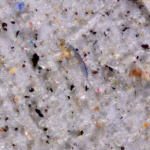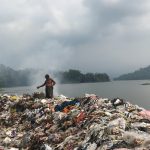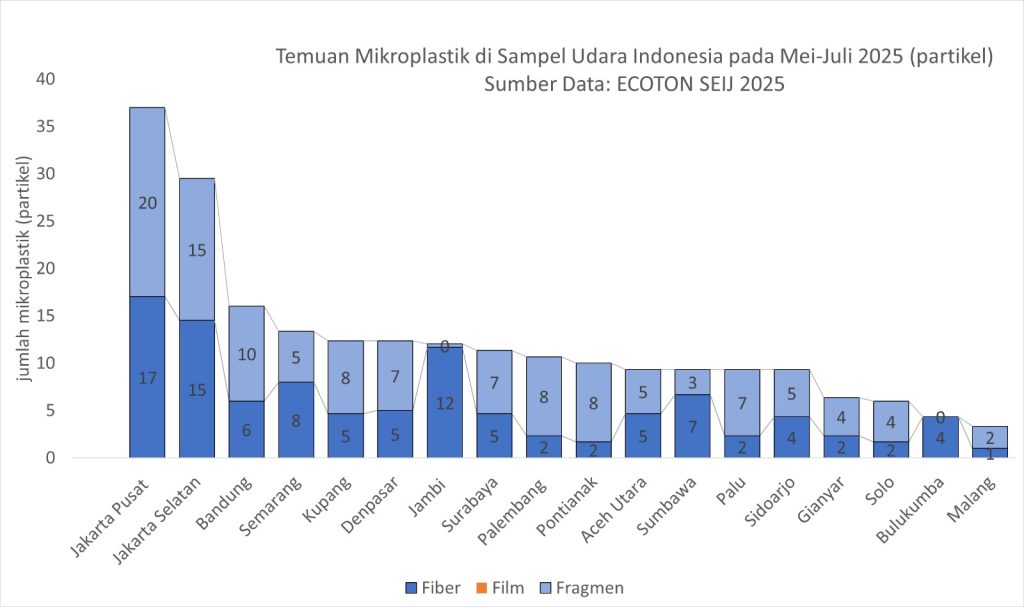
Jakarta’s Rainwater Contaminated with Microplastics
Research by the National Research and Innovation Agency (BRIN) revealed that rainwater in Jakarta contains microplastic particles. According to M. Reza Cordova, the microplastics found in rainwater originate from synthetic fibers in clothing, vehicle dust and tires, residues from burning plastic waste, and the degradation of plastics in open spaces. Within one square meter, 15 microplastic particles were identified, consisting of synthetic fibers and fragments of polymers such as polyester, nylon, polyethylene, polypropylene, and polybutadiene from vehicle tires. BRIN’s findings are supported by research from ECOTON and SIEJ, which showed that microplastic contamination in Jakarta’s air ranks highest compared to other cities studied.
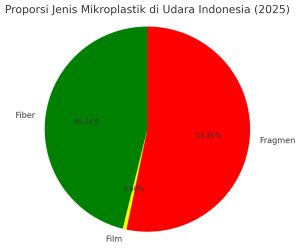 The adjacent diagram shows that three types of microplastic particles were identified: fragments (53.26%), fibers (46.14%), and films (0.6%). (Source: ECOTON, 2025)
The adjacent diagram shows that three types of microplastic particles were identified: fragments (53.26%), fibers (46.14%), and films (0.6%). (Source: ECOTON, 2025)
Jakarta: The City with the Highest Airborne Microplastic Levels
The types of polymers found in the air are more diverse compared to those detected in rainwater. In addition to the five polymers identified in rainwater—polyester, nylon, polyethylene, polypropylene, and polybutadiene—researchers from ECOTON and SIEJ also detected PTFE, epoxy, polyisobutylene (synthetic rubber), polyolefin, and silica in the air.
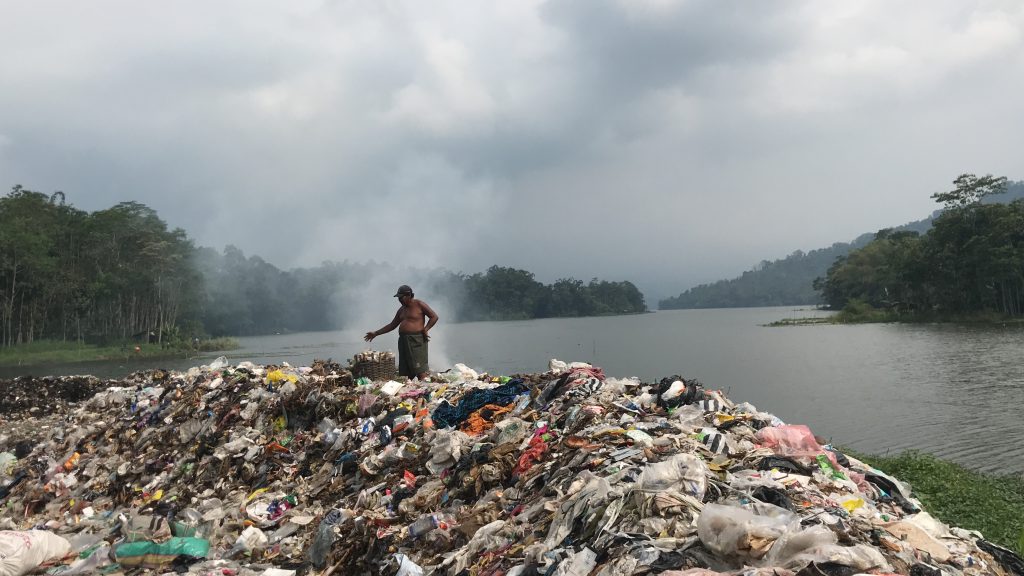
“The greater diversity of microplastic polymers in the air is due to the fact that 57% of plastic waste burning—caused by inadequate waste management in Indonesia—contributes to the high levels of airborne microplastic particles,” explained Sofi Azilan Aini. Furthermore, the coordinator of the Microplastic Research Volunteer team revealed that Jakarta has the highest level of airborne microplastic contamination in Indonesia, with 37 particles detected over a 2-hour period, far exceeding other cities such as Malang, which recorded only 2 microplastic particles in the same period.
Air sampling sites in Jakarta included Pasar Tanah Abang, Jalan Sawah Besar, and the Ragunan area. Pasar Tanah Abang, Southeast Asia’s largest textile trade center, has become a microplastic hotspot due to a combination of heavy vehicle traffic, single-use plastic usage, loading and unloading activities, and the release of synthetic fibers from textiles. The airborne microplastic fragments and fibers are then dispersed by the wind and can potentially fall with rainwater, explaining the phenomenon of “microplastic rain”, which has recently drawn attention in Jakarta. Meanwhile, the city with the lowest airborne microplastic abundance was found to be Malang, with only 2 particles detected over 2 hours, due to low industrial and waste-burning activities and the dominance of natural vegetation.
“Microplastics are small plastic pieces measuring less than 5 millimeters. Their surfaces easily attract toxic substances in their surroundings, such as heavy metals and other hazardous chemicals. As a result, microplastics can be up to 106 times more toxic than individual heavy metals, as they carry a mixture of various pollutants simultaneously,” said Rafika, Head of ECOTON’s Microplastic Laboratory.
Research Methodology
This study employed passive air deposition monitoring of microplastics, combined with microscopic analysis and Fourier Transform Infrared (FTIR) spectroscopy to determine polymer types. The research steps included placement of glass Petri dishes at a height of 1–1.5 meters (human breathing zone) in representative locations of each city, particle capture through natural deposition over 2 hours using sterile, wet Whatman filter paper, and separation and analysis of plastic particles under a stereo microscope, including identification of shape (fiber, film, fragment), color, size, and confirmation of polymer type using FTIR. This method follows the studies by Islam et al. (2024) and Aini et al. (2024) and was adapted to the urban environmental context of Indonesia.
Sources of Airborne Microplastics
“The main sources of airborne microplastics are open burning of plastic and household waste, degradation of plastic products and synthetic textiles, as well as emissions from motor vehicles due to tire and brake friction,” explained Sofi Azilan Aini.
Several international studies have shown that plastic burning can generate microplastic particles and synthetic aerosols that remain suspended in the air and can be carried by the wind for hundreds of kilometers. When these particles interact with water vapor in the atmosphere, they can fall with rain, creating the phenomenon now known as microplastic rain.
ECOTON Policy Recommendations for the Government and Ministry of Environment
ECOTON urges the Ministry of Environment to take the following strategic actions:
-
Ban open burning of waste and strengthen environmental law enforcement at the village level.
-
Enhance waste sorting facilities at the source and expand the network of zero-waste cities in every district.
-
Develop organic waste management systems (composting and biodigesters) to reduce the volume of waste that could be burned.
-
Conduct regular monitoring of microplastic content in Jakarta’s air and rainwater as a basis for science-based policies.
-
Strengthen public campaigns and environmental education to change community behavior regarding waste burning and single-use plastic consumption
Through these measures, Jakarta can reduce airborne microplastic emissions, protect public health, and build a more equitable and sustainable waste management system. (*)

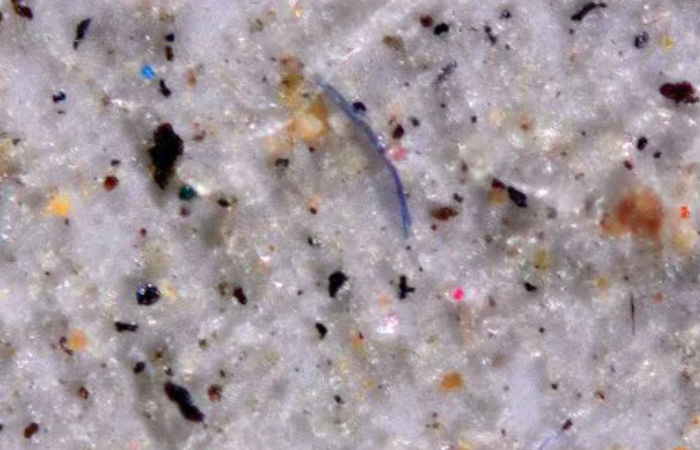
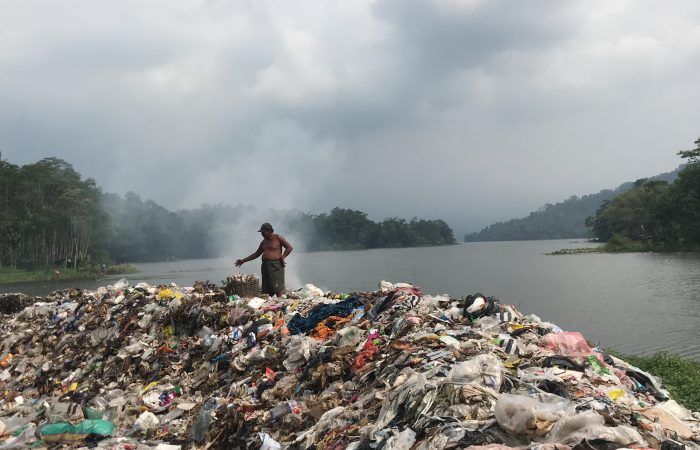
 Ecoton (Ecological Observation and Wetlands Conservation) is a foundation focused on the conservation of river ecosystems and wetlands in Indonesia. We conduct scientific research, environmental education, and awareness campaigns to improve water quality and protect biodiversity.
Ecoton (Ecological Observation and Wetlands Conservation) is a foundation focused on the conservation of river ecosystems and wetlands in Indonesia. We conduct scientific research, environmental education, and awareness campaigns to improve water quality and protect biodiversity.